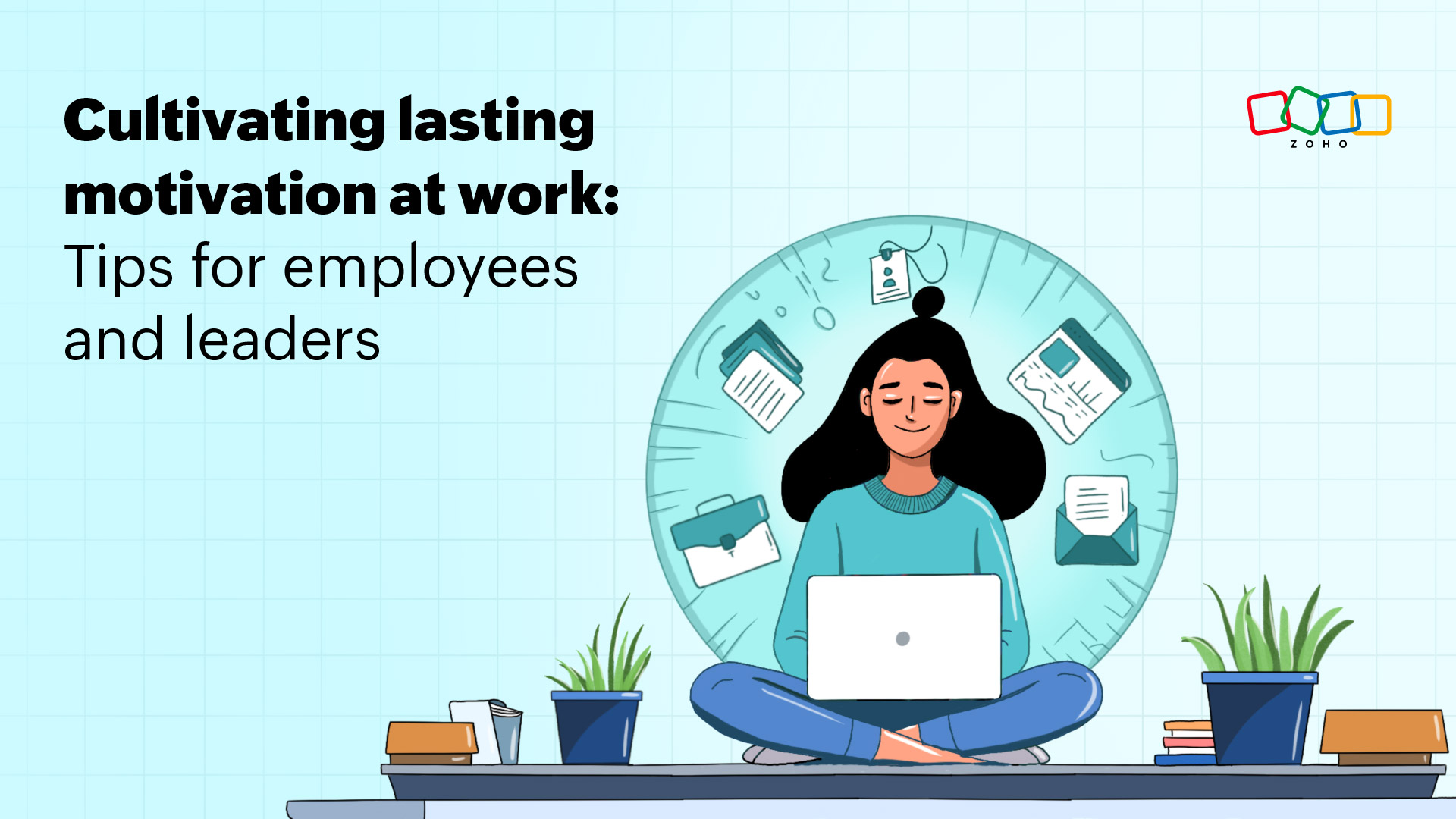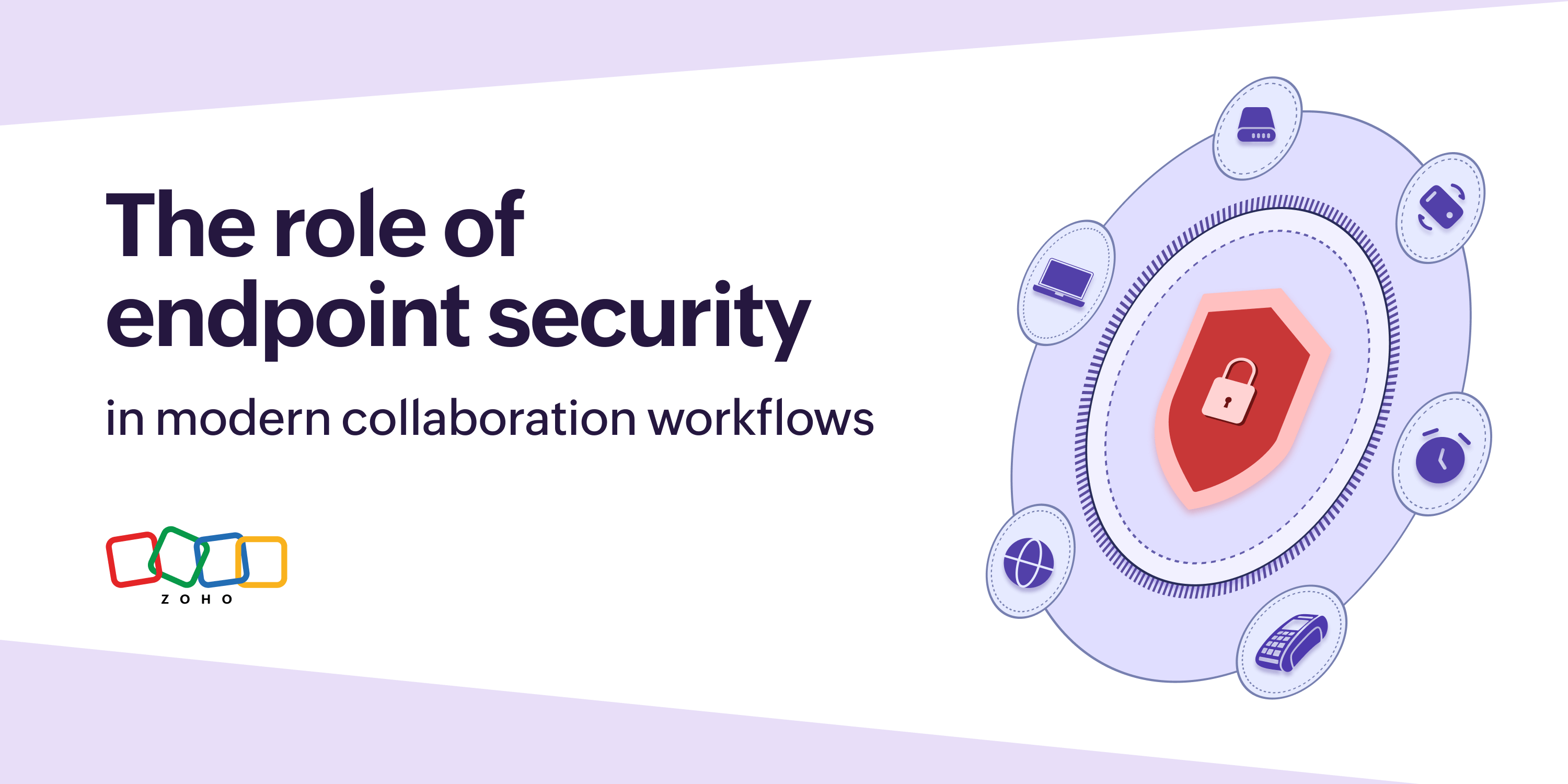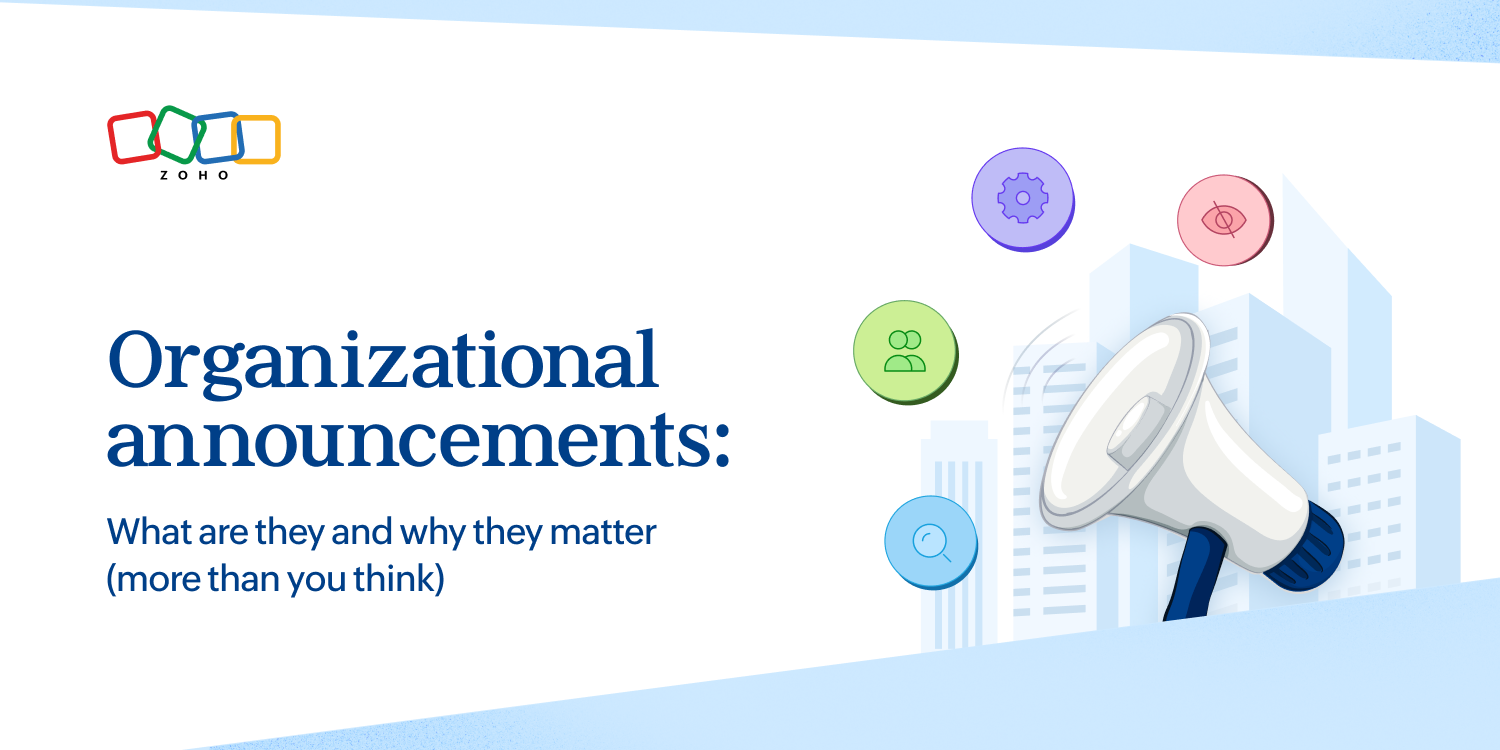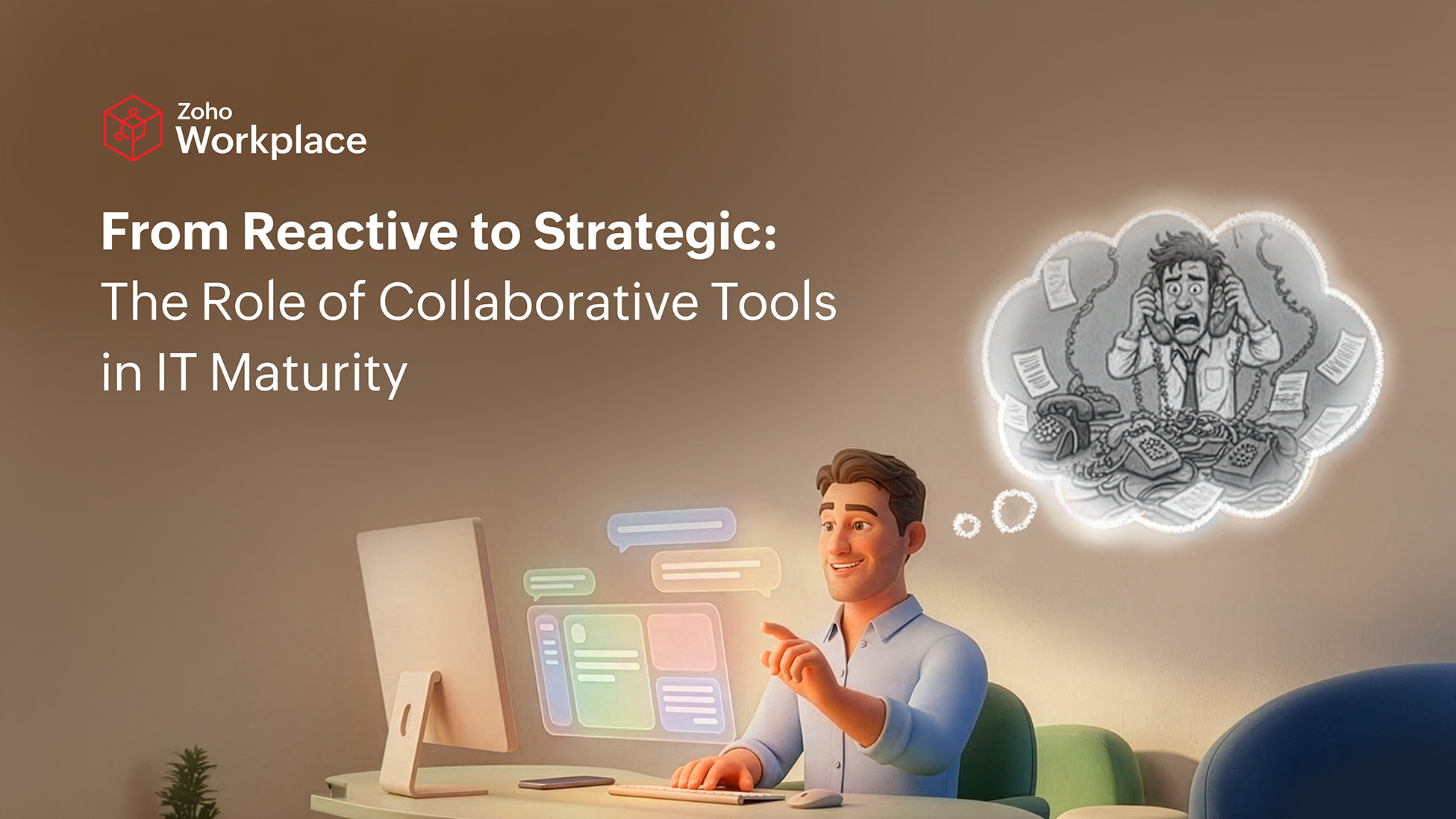- HOME
- All Topics
- Thought Leadership
- Cultivating lasting motivation at work: Tips for employees and leaders
Cultivating lasting motivation at work: Tips for employees and leaders
- Published : August 19, 2024
- Last Updated : August 22, 2024
- 835 Views
- 7 Min Read
Employee motivation is the engine that drives productivity, innovation, and job satisfaction. In fact, adequate employee motivation improves workplace retention and overall organizational success.
Yet, despite its significance, recent data paints a concerning picture: In 2024, only 15% of employees worldwide report feeling motivated at work.
Motivation isn't just about feeling good at work. It affects everything from how well you complete tasks to how long employees stay with a company. When people are motivated, they're more creative, take more initiative, and contribute more to their team's success.
So, let’s ponder what motivation in a professional environment really is and how you can improve it. This article will explore the concept of motivation at work, its importance, and practical ways to enhance it in your professional life.

What is motivation at work?
Motivation is the inner drive that compels individuals to act in a certain way to achieve specific goals. In the workplace, motivation refers to the enthusiasm, commitment, and energy that employees bring to their jobs. It's the reason why people get up in the morning and put effort into their work tasks.
There are two primary types of workplace motivation:
Intrinsic motivation. This comes from within the individual. It's driven by personal satisfaction, finding the task enjoyable, and accomplishing something. For example, an employee might be motivated by the challenge of solving a complex problem or the satisfaction of mastering a new skill.
Extrinsic motivation. This is driven by external factors such as rewards, recognition, or avoiding negative consequences. Examples include working for a salary increase, bonuses, or to avoid disciplinary action.
Motivation can come from various sources, both internal and external, and it significantly influences employees’ performance and feelings about their work.
Motivation is also shaped by various factors, including culture, society, and lifestyle. Different cultures have specific factors that drive motivation. Additionally, education, social surroundings, and lifestyle choices significantly impact motivation.
For example, the culture and values you grew up with significantly influence your motivation. If you were raised in a family that values physical work, you might be inclined to pursue a career that involves working with your hands instead of sitting in an office.
Additionally, if your social circle emphasizes professional success, you may be driven to seek a promotion due to your lifestyle and environment.
The importance of motivation in the workplace
An employee with low motivation works slower and spends more time away from tasks, often browsing the web or using their phone. This not only affects their own productivity but also impacts other employees—potentially slowing down the entire company's progress and hindering the achievement of important goals.
So, here’s why workplace motivation is so important.
Enhanced productivity and performance
Motivated employees tend to be more productive and perform better. Believe it or not, studies confirm that a motivated team member is at least 20% more productive.
When employees are motivated, they’re more focused, work faster, and produce higher-quality work. This directly translates to better overall performance for the organization. Motivated employees not only work more efficiently but also make better colleagues.
They often demonstrate this by offering help, mentoring others, and assisting with tasks.
Increased innovation and creativity
A motivated employee will be more inclined to stick around. Motivated employees are more satisfied with their jobs and less likely to quit. As a result, companies aren’t forced to spend so much on hiring and training new arrivals.
According to one study, companies with high employee motivation experience lower absenteeism and turnover rates, which can save significant costs and maintain organizational stability.
Improved employee engagement and job satisfaction
Not only is a motivated person more engaged and committed to their work, but they’re also more likely to go above and beyond. Why? Because they’re adequately motivated by treatment and compensation. This engagement leads to higher job satisfaction, which in turn fosters a positive work environment and culture.
In addition, a motivated team member is also more willing to collaborate efficiently with others. This is crucial for enhancing overall team performance.
Better organizational culture
A motivated workforce contributes to a positive organizational culture.
When employees are motivated, they’re more likely to exhibit positive behaviors and attitudes, which can influence their peers and create a supportive environment built upon communication and understanding. A strong culture of motivation can lead to a more cohesive and productive team.
Enhanced customer satisfaction
Even if the position isn’t customer-facing, the impact of motivated employees will reverberate across the organization and be felt by customers.
As a result, they’ll be more likely to become regulars/subscribers and recommend your brand to other people. Word of mouth is still kind, and this can be an invaluable resource in the process.
Factors affecting workplace motivation
Workplace motivation is influenced by various factors that can boost or reduce an employee's enthusiasm to perform well. Effectively recognizing these factors is essential for establishing a motivating work environment:
Reward and recognition. Acknowledging and rewarding employees for their efforts and achievements boosts morale and encourages continued high performance.
Opportunities for growth and development. Simply put, employees will be more motivated when faced with growth prospects that can boost their careers.
Work environment. A positive, supportive, and inclusive work environment creates a sense of belonging and alleviates stress.
Financial and non-financial benefits. Competitive salaries, flexible work schedules, health benefits, and other perks make employees feel valued and motivated.
Leadership and management. Effective and supportive leadership that communicates clearly and provides constructive feedback inspires and motivates employees.
Work-life balance. While providing extra work to those highly motivated is important, ensure that others know a positive work-life balance is mandatory and that they won’t be judged because of that.
Relationship with colleagues. Positive interactions and teamwork among colleagues make the workplace more enjoyable and fulfilling.
Job security. Feeling secure in their positions reduces anxiety and keeps employees focused and motivated.
Clear goals and expectations. When employees understand what is expected out of them and how their work will help the organization succeed, they feel motivated.
Helping employees stay motivated at work
If you want to maintain a vibrant and collaborative atmosphere, the motivational atmosphere has to be consistent. Here are some practical tips on how to achieve this.
Set clear goals
A lack of clarity is often the main culprit when it comes to failed projects. So, any goals must be Specific, Measurable, Achievable, Realistic, and Time-bound—also known as SMART goals.
Clear goals provide direction and a sense of purpose, making employees feel that their work is meaningful and contributes to the company’s success.
Define specific goals. Clearly outline what needs to be achieved. For example, instead of saying "increase CTR," specify "increase CTR by 23% by 2026 and explore which resources are needed."
Measure progress. Before anything else, make sure that everyone understands the KPIs. Use tools like performance dashboards or regular check-ins to monitor achievements.
Ensure achievability. Set realistic targets that challenge employees but are attainable with effort.
Maintain relevance. Of course, the goals must be aligned with the company’s. Otherwise, you’ll waste a lot of time.
Set deadlines. Assign specific timelines for goal completion to create a sense of urgency.
Create a positive environment
Positivity is more than a cliche—it really impacts motivation on a large scale. This includes both the office workspace and the overall organizational culture.
There’s a lot you can do to improve both. For instance, you can decorate the office with motivational posters, ensure adequate lighting, and create comfortable workstations. Also, it’s crucial to encourage a supportive and collaborative atmosphere where employees feel valued and respected.
A positive environment makes employees look forward to coming to work, which enhances their motivation and productivity.
Provide opportunities for growth
Opportunities for growth and development are key to keeping employees engaged and motivated. This is especially crucial right now because data shows that at least 85% of employees say that they aren’t adequately engaged at work.
Clearly outline potential career paths within the organization and provide the resources and support needed to achieve these paths. This shows employees that the organization is invested in their long-term success.
Additionally, implementing a mentorship program where experienced employees guide and support newer staff can be highly beneficial.
This investment in personal and professional growth encourages employees to remain motivated and committed.
Reward and recognize
The truth is, at the core of every motivated collective is a healthy dose of celebrating employees' achievements.
Use methods like public recognition, bonuses, or thank-you notes. Implement a structured recognition program, such as employee-of-the-month awards or peer-nomination systems, to ensure consistent and meaningful recognition.
Rewards should match the significance of the achievement and can include bonuses, extra vacation days, or gift vouchers. As a result, they’ll feel like investing effort for the better of the team is a logical action.
Wrapping up
A motivated workforce isn't just a nice-to-have — it's a critical asset that can significantly impact your bottom line and competitive edge.
When your employees are motivated, you'll see improvements across all areas of your business. Productivity rises, innovation flourishes, and customer satisfaction improves.
A motivated team is more likely to stay with your company, reducing costly turnover and preserving institutional knowledge.
The effort you put into motivating your team today will pay dividends tomorrow. It's the fuel that will drive your company's growth, helping you attract top talent and setting you apart in your industry.
 Gary Stevens
Gary StevensGary Stevens is the CTO of Hosting Canada, a website that provides expert reviews on hosting services and helps readers build online businesses and blogs. Gary specializes in topics on cloud technology, thought leadership, and collaboration at work.


